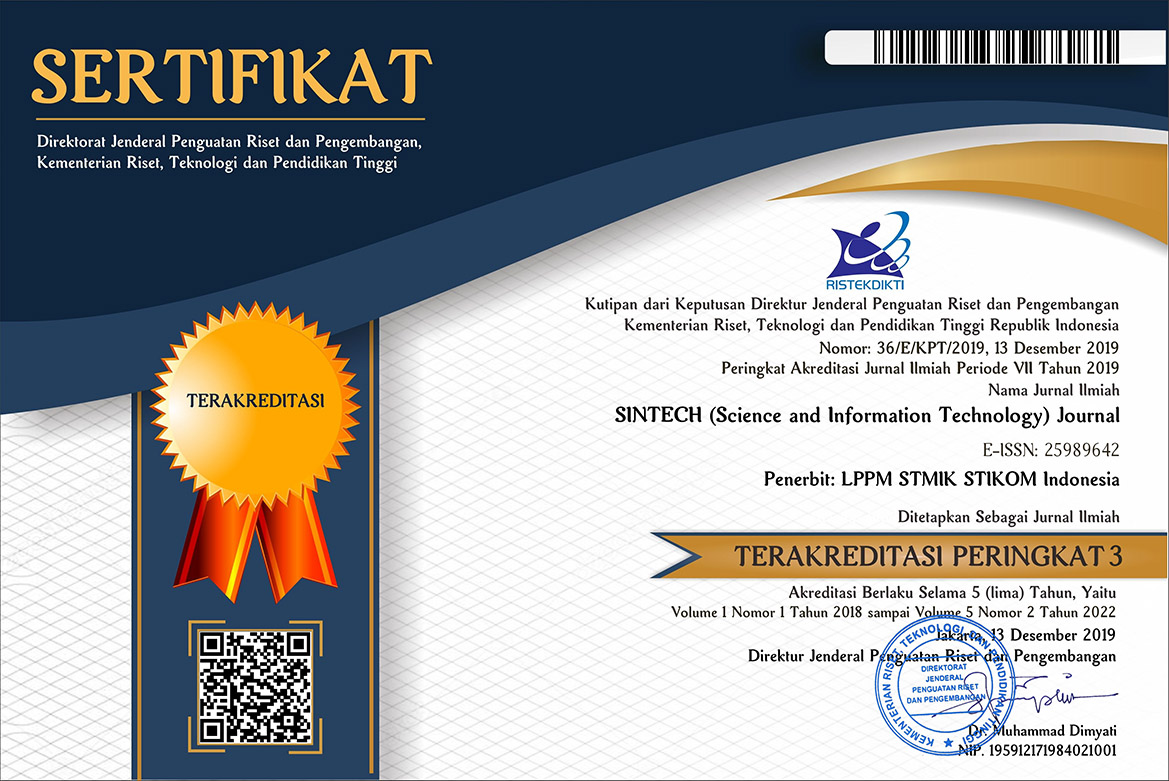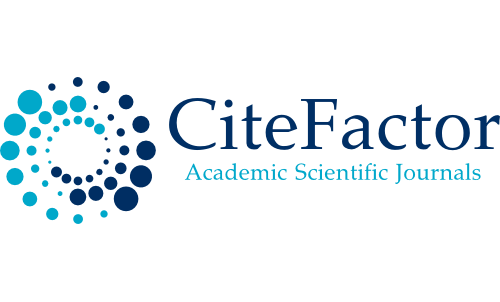Densely Connected dan Residual Convolutional Neural Network Untuk Estimasi Jumlah Keluarga Tingkat Desa Dengan Citra Satelit
DOI:
https://doi.org/10.31598/sintechjournal.v5i2.1191Keywords:
deep learning, remote sensing, xgboost, family countAbstract
Indonesia conducts a population census every ten years to collect population data. Variables such as family count are collected to provide general population information for policy making and sampling frames. Indonesia as an archipelagic country with an area of 8.3 million km2 will require a lot of resources to collect such data. In the age of big data, satellite imagery has become more available and inexpensive. In this study, we used West Java as a case study for applying deep learning to estimate family counts at the village level. Sentinel-2 and SPOT-67 data are used to model family counts. Using xgboost, we regress the family count with the softmax probability, resulting from family density classification using deep learning (densenet121 and resnet50 ) as the input. With an R2 of 0.93 and a MAPE of 19%, the regression model provides a good prediction of the number of families in the census. Regarding the input data, Sentinel-2 is sufficient to accomplish this task as there is no significant difference from the modeling results with higher resolution images (SPOT 6-7). The input level in the form of a segment of the estimation area and using structured auxiliary variables also deliver better predictions
Downloads
References
Handbook of Web Surveys. Hoboken, NJ: Wiley, 2021.
BPS, “Proyeksi Penduduk Indonesia 2015-2045 Hasil SUPAS 2015”, 2015.
C. A. Hill, P. P. Biemer, and T. D. Buskirk, Big Data Meets Survey Science: A Collection of innovative methods. Hoboken, NJ: Wiley, 2021.
G. Cheng, X. Xie, J. Han, L. Guo, and G.-S. Xia, “Remote Sensing Image Scene Classification meets Deep learning: Challenges, methods, benchmarks, and opportunities,” IEEE Journal of Selected Topics in Applied Earth Observations and Remote Sensing, vol. 13, pp. 3735–3756, 2020.
C. Robinson, F. Hohman, and B. Dilkina, “A deep learning approach for population estimation from satellite imagery,” Proceedings of the 1st ACM SIGSPATIAL Workshop on Geospatial Humanities, 2017.
W. Hu, J. H. Patel, Z.-A. Robert, P. Novosad, S. Asher, Z. Tang, M. Burke, D. Lobell, and S. Ermon, “Mapping missing population in rural India,” Proceedings of the 2019 AAAI/ACM Conference on AI, Ethics, and Society, 2019.
X. Huang, D. Zhu, F. Zhang, T. Liu, X. Li, and L. Zou, “Sensing population distribution from satellite imagery via Deep Learning:model selection, neighboring effects, and systematic biases,” IEEE Journal of Selected Topics in Applied Earth Observations and Remote Sensing, vol. 14, pp. 5137–5151, 2021.
X. Xing, Z. Huang, X. Cheng, D. Zhu, C. Kang, F. Zhang, and Y. Liu, “Mapping human activity volumes through remote sensing imagery,” IEEE Journal of Selected Topics in Applied Earth Observations and Remote Sensing, vol. 13, pp. 5652–5668, 2020.
E. Suel, S. Bhatt, M. Brauer, S. Flaxman, and M. Ezzati, “Multimodal Deep Learning from satellite and street-level imagery for measuring income, overcrowding, and environmental deprivation in urban areas,” Remote Sensing of Environment, vol. 257, p. 112339, 2021.
K. He, X. Zhang, S. Ren, and J. Sun, “Deep residual learning for image recognition,” 2016 IEEE Conference on Computer Vision and Pattern Recognition (CVPR), 2016.
G. Huang, Z. Liu, L. Van Der Maaten, and K. Q. Weinberger, “Densely connected Convolutional Networks,” 2017 IEEE Conference on Computer Vision and Pattern Recognition (CVPR), 2017.
P. Martimort, O. Arino, M. Berger, R. Biasutti, B. Carnicero, U. Del Bello, V. Fernandez, F. Gascon, B. Greco, P. Silvestrin, F. Spoto, and O. Sy, “Sentinel-2 optical high-resolution mission for GMES operational services,” 2007 IEEE International Geoscience and Remote Sensing Symposium, 2007.
P. B. de Selding, “Spot Image's Next Satellite to be Built Mainly with Private Capital,” Space News, Vol. 19, Issue 3, p. 1. 2008
T. Chen and C. Guestrin, “XGBoost,” Proceedings of the 22nd ACM SIGKDD International Conference on Knowledge Discovery and Data Mining, 2016.
C. F. Sabottke and B. M. Spieler, “The effect of image resolution on Deep Learning in radiography,” Radiology: Artificial Intelligence, vol. 2, no. 1, 2020.
P. Gunning and J. Horgan, “Improving the Lavallée and Hidiroglou algorithm for stratification of skewed populations,” Journal of Statistical Computation and Simulation, vol. 77, no. 4, pp. 277–291, 2007.
L.N. Smith. “A disciplined approach to neural network hyper-parameters: Part 1 - learning rate, batch size, momentum, and weight decay.” ArXiv abs/1803.09820. 2018
L. N. Smith, “Cyclical learning rates for training neural networks,” 2017 IEEE Winter Conference on Applications of Computer Vision (WACV), 2017.
J. Chen, D. Liang, Z. Zhu, X. Zhou, Z. Ye, and X. Mo, “Social media popularity prediction based on visual-textual features with xgboost,” Proceedings of the 27th ACM International Conference on Multimedia, 2019.
Downloads
Published
How to Cite
Issue
Section
License
Copyright (c) 2022 Jodi jhouranda Siregar, Anang Kurnia, Kusman Sadik

This work is licensed under a Creative Commons Attribution-NonCommercial-ShareAlike 4.0 International License.
Copyright in each article belongs to the author.
- The authors admit that SINTECH Journal as a publisher who published the first time under
 Attribution-NonCommercial-ShareAlike 4.0 International (CC BY-NC-SA 4.0) License.
Attribution-NonCommercial-ShareAlike 4.0 International (CC BY-NC-SA 4.0) License. - Authors can include writing separately, regulate distribution of non-ekskulif of manuscripts that have been published in this journal into another version (eg sent to respository institution author, publication into a book, etc.), by recognizing that the manuscripts have been published for the first time in SINTECH Journal















1.png)




